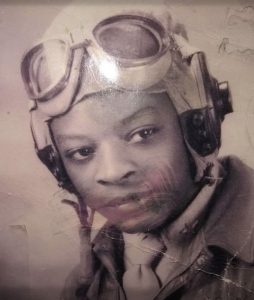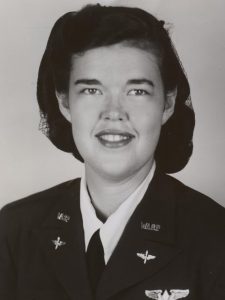Flying an airplane is not a one-person show. Aside from the pilot, the aircraft itself takes a dedicated multi-person maintenance and training staff to keep it safe to fly. Magnify this by about a 1,000 and you can start to get a grasp of the scope it takes to run a successful squadron.
It’s common for people to imagine the Air Force as a giant group of pilots. Of course in reality it’s so much more. According to the Air Force Personnel Center, there are 324,820 active duty members of the USAF (and this does not include the Guard, Reserve or approximately 4,000 Air Force Academy cadets!). Of that, only 13,811 are pilots. Doing some quick math, that’s actually a pretty slim ratio.
For every hour of flight time, there are countless hours spent by support crews on the ground planning, briefing and maintaining in an orchestrated team effort. Pilots may use an aircraft as a tool to carry out a mission, but they are one small piece of a very intricate puzzle. And so it was for the Tuskegee Airmen and the over 10,000 support personnel who formed the solid foundation for the squadron’s successes in WWII. Couple this with the fact that they were doing their jobs while enduring the second-class treatment of segregation, just as hungry to serve their country during wartime as their white counterparts.
To fully appreciate the impressive courage and record of the 99th Fighter Squadron, military and civilian African-American men and women served as flight instructors, officers, bombardiers, navigators, radio technicians, mechanics, air traffic controllers, parachute riggers, electrical and communications specialists, laboratory assistants, cooks, musicians, and supply, fire-fighting, and transportation personnel. Each one of them was a unique piece of the puzzle that helped paved the way for the desegregation of the military, which began with President Harry S. Truman’s Executive Order 9981 in 1948.
 One of the first support personnel serving with the Tuskegee Airmen from 1942 to 1945 was Staff Sergeant Thomas Ellis. In fact, he was the first enlisted man of the group. After initially being assigned to Tuskegee, he was chief clerk over a team of five clerical staff but was soon in charge of payroll, maintaining service records, updating classifications, handling correspondence and other high-level clerical duties. He also kept a journal of all cadets’ progress through the flight training school, including the notation of crashes and washouts.
One of the first support personnel serving with the Tuskegee Airmen from 1942 to 1945 was Staff Sergeant Thomas Ellis. In fact, he was the first enlisted man of the group. After initially being assigned to Tuskegee, he was chief clerk over a team of five clerical staff but was soon in charge of payroll, maintaining service records, updating classifications, handling correspondence and other high-level clerical duties. He also kept a journal of all cadets’ progress through the flight training school, including the notation of crashes and washouts.
He deployed to Europe with the rest of the 99th in late 1943. This was the unit’s first experience with complete segregation, worse than they had experienced in the States. Theaters and mess halls were roped off for “white” and “colored.” German POWs were assigned to work in the kitchen and other public areas, and while Ellis and his fellow squadron members were segregated, these prisoners could sit and move about wherever the rest of the white population could.
“Here we were, going to fight for out country, and those Germans, who originally wanted nothing more than to kill Americans, were being treated better than we were,” remembers Ellis.
When we speak of the Tuskegee Airmen we often are amazed and inspired by their ability to triumph over adversity. But this tenacity and strength of spirit applies far beyond the pilots who were once deemed unfit to fly simply because of the color of their skin. Dedicated service members like Ellis fought battles on the home front and abroad for equality, respect and dignity. Their collective effort and passion to serve our county opened the doors to future generations to join the Armed Forces with equal opportunity.

We salute the 10,000 support personnel of the Tuskegee Airmen, living and deceased, and continue to work to preserve their legacy. RISE ABOVE!





